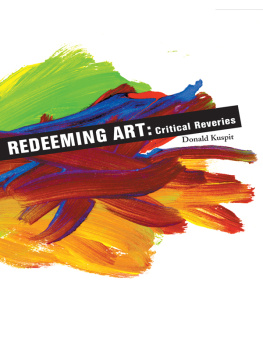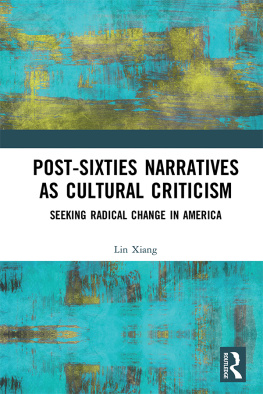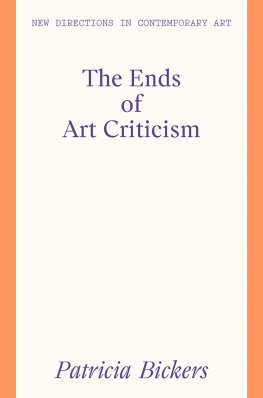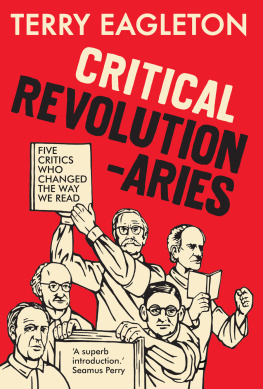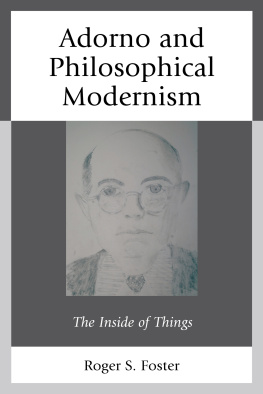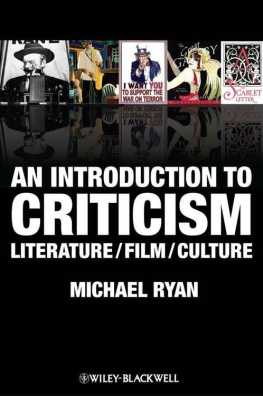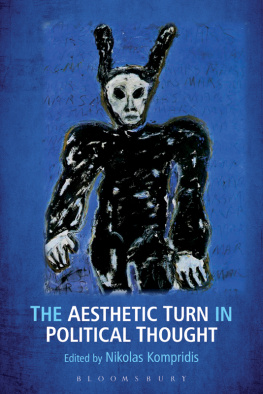Redeeming Art
Critical Reveries
BY
Donald Kuspit
EDITED WITH AN INTRODUCTION BY
Mark Van Proyen

2000 Donald Kuspit
All rights reserved. Copyright under Berne Copyright Convention, Universal Copyright Convention, and Pan-American Copyright Convention. No part of this book may be reproduced, stored in a retrieval system, or transmitted in any form, or by any means, electronic, mechanical, photocopying, recording, or otherwise, without prior permission of the publisher.
04 03 02 01 00 5 4 3 2 1
Published by Allworth Press
An imprint of Allworth Communications
10 East 23rd Street, New York NY 10010
Copublished with the School of Visual Arts
Cover and book design by James Victore, Beacon, NY
Page composition by Sharp Designs, Lansing, MI
ISBN: 1-58115-055-5
LIBRARY OF CONGRESS CATALOGING-IN-PUBLICATION DATA
Kuspit, Donald B. (Donald Burton) 1935
Redeeming art: critical reveries / Donald Kuspit.
p. cm. (Aesthetics today)
Includes bibliographical references and index.
ISBN 1-58115-055-5
1. Art, Modern20th centurythemes, motives. 2. Aesthetics, Modern20th century.
3. Postmodernism. I. Title. II. Series.
N6490 .K876 2000
709'.04dc21
00-024398
AESTHETICS TODAY Editorial Director: Bill Beckley
Dialectic of Decadence by Donald Kuspit
Beauty and the Contemporary Sublime by Jeremy Gilbert-Rolfe
Sculpture in the Age of Doubt by Thomas McEviley
The End of the Art World by Robert C. Morgon
Uncontrollable Beauty edited by Bill Beckley with David Shapiro
The Laws of Fsole by John Ruskin
Lectures on Art by John Ruskin
Imaginary Portraits by Walter Pater
Printed in Canada
Contents
D onald Kuspit is an art critic and a professor of art history and philosophy at the State University of New York at Stony Brook. He received the 1997 Lifetime Achievement Award for Distinguished Contribution to Visual Arts from the National Association of Schools of Art and Design. He is a 1983 recipient of the College Art Associations prestigious Frank Jewett Mather Award for Distinction in Art Criticism. He is a contributing editor at Artforum, Sculpture, and New Art Examiner magazines, the editor of Art Criticism, and the editor of a series on American Art and Art Criticism for Cambridge University Press. He has been awarded fellowships from the Ford Foundation, the Fulbright Commission, the National Endowment for the Humanities, the National Endowment for the Arts, and the Guggenheim Foundation, among others. He has received honorary doctorates in fine arts from Davidson College, San Francisco Art Institute, and Cornell Universtiy, and an honorary doctorate of humane letters from the University of Illinois at UrbanaChampaign. An author of numerous articles, exhibition reviews, and catalog essays, Kuspit has written more than twenty books, including The Dialectic of Decadence: Between Advance and Decline in Art (Allworth Press), Daniel Brush, Joseph Raffael, Chihuly, and Idiosycratic Identities: Artists at the End of the Avant-Garde. He lives in New York City.
I d like to express my gratitudemy very profound gratitudeto Mark Van Proyen, for the interest that he has shown in my work, and for his brilliant essay about it, which is also a remarkable analysis of the situation of art criticism during the last few decades. I am also very grateful to Bill Beckley and Tad Crawford for their interest in publishing this collection of essays and interviews. I admire their effort to bring art criticism to the attention of the educated public beyond the art world. Without their seriousness, art discourse would be greatly impoverished. I am also grateful to Elizabeth Baker, Jack Bankowsky, Kathryn Hixson, Ida Panicelli, Ingrid Sischy, and Miles Unger for their editorial support and understanding. And I want to thank my wife Judith Clements Kuspit, whose emotional support and intellect are essential to my existence.
DONALD KUSPIT
New York, June 1, 1999
I would like to express my deep gratitude to several individuals who have made important contributions to the development and presentation of this book. For their support of and enthusiasm for this project, I would like to thank Tad Crawford and Bill Beckley, respectively the publisher and the series editor of the School of Visual Arts/Allworth Press Aesthetics Today series. Jeff Gunderson and his able staff at the library of the San Francisco Art Institute were superb in assisting with a number of research details, as were Susan Barron and Crystal Green, who also did a remarkable job in typing much of the material included here. Most importantly, I would like to extend special thanks to Donald Kuspit for being supremely generous with his time, encouragement, and enthusiasm. The critical spirit will be forever indebted to him.
MARK VAN PROYEN
Bolinas, June 4, 1999
INTRODUCTION
BY MARK VAN PROYEK
I do not believe that the academically oriented article, claiming to be definitive, is superior to the supposedly transient journalistic article as a vehicle for serious critical analysis, or that self-styled systematic thinking is inherently more rigorous and insightful than an informal quick-witted argument which is responsive to immediate issues. Neither guarantees a more genuine understanding than the other. Neither has a monopoly on the truth. Neither offers a more long-term perspective... there is no exclusive way of communicating today, none that is automatically more successful than any other.
Donald Kuspit, Preface to The New Subjectivism, 1988
I have elsewhere maintained that so-called aesthetic pleasure is an umbrella term covering a complex variety of psychic satisfactions, specifically, the satisfaction of one or more of what Erich Fromm called psychic needs or existential needs: the need for relatedness, for transcendence, for rootedness, for a sense of identity, and for a frame of orientation and an object of devotion [and]for effectiveness. I would argue that one of the reasons figural art in general and so-called realistic art in particular are regarded as being inferior to abstract art is that they nakedly reveal these needs, debunking the myth of pure aesthetic pleasure. They are overtly and honestly psychological, and as such, anathema to abstraction.
Donald Kuspit, A Freudian Note on Abstract Art, 1989
Journalism is unreadable and literature is not read.
Oscar Wilde, The Critic as Artist, 1890
I n an uncharacteristically blunt utterance, Donald Kuspit once wrote, Narcissism to overcome nihilism: that is the formula for the best art., as Robert C. Morgan has called itand its chief characteristic seems to be an adamant view of itself as being somehow above the experiential pragmatics and psychological politics that inhere in an aesthetic experience rooted in the dramas of the lifeworld. It is just such a reminder that this book seeks to put into the foreground, and in so doing it hopes to invigorate a debate that has gone sterile in recent years, a debate that has collapsed into a quagmire of dead rhetorical ritual that seems ever more complacent in its making a spectacle of its irrelevance to the present as well as its lack of sincere concern for any viable future.
This collection of Donald Kuspits writings and interview statements reflects other concerns as well. One of these is to provide a synoptic survey of the evolution of Kuspits multifaceted thought from all phases of his twenty-five-year career as an art critic and public intellectual. To accomplish this, I have sought to include examples of his work which represent the widest possible spectrum of his interests and approaches, giving special emphasis to how they might be taken as waypoints upon which a larger intellectual trajectory might be mapped. My secondary hope is to further flesh out and clarify a body of reflective thought which already casts an imposing and controversial shadow upon the history of contemporary art and its critical record. To that end, I have taken pains to select essays which have not yet appeared in any previously published book or anthology. In keeping with that ambition, I have also sought to give special emphasis to the disparate modes of address which Kuspit has employed. These have run the gamut from the academically formal to the journalistically topical, and their representation in this volume is intended to provide a multiplicity of useful points of entry and comparison for a wide spectrum of otherwise uninitiated readers, allowing them to gain substantial acquaintance with Kuspits complicated projects of psychoaesthetic inquiry and rigorous intellectual challenge.

